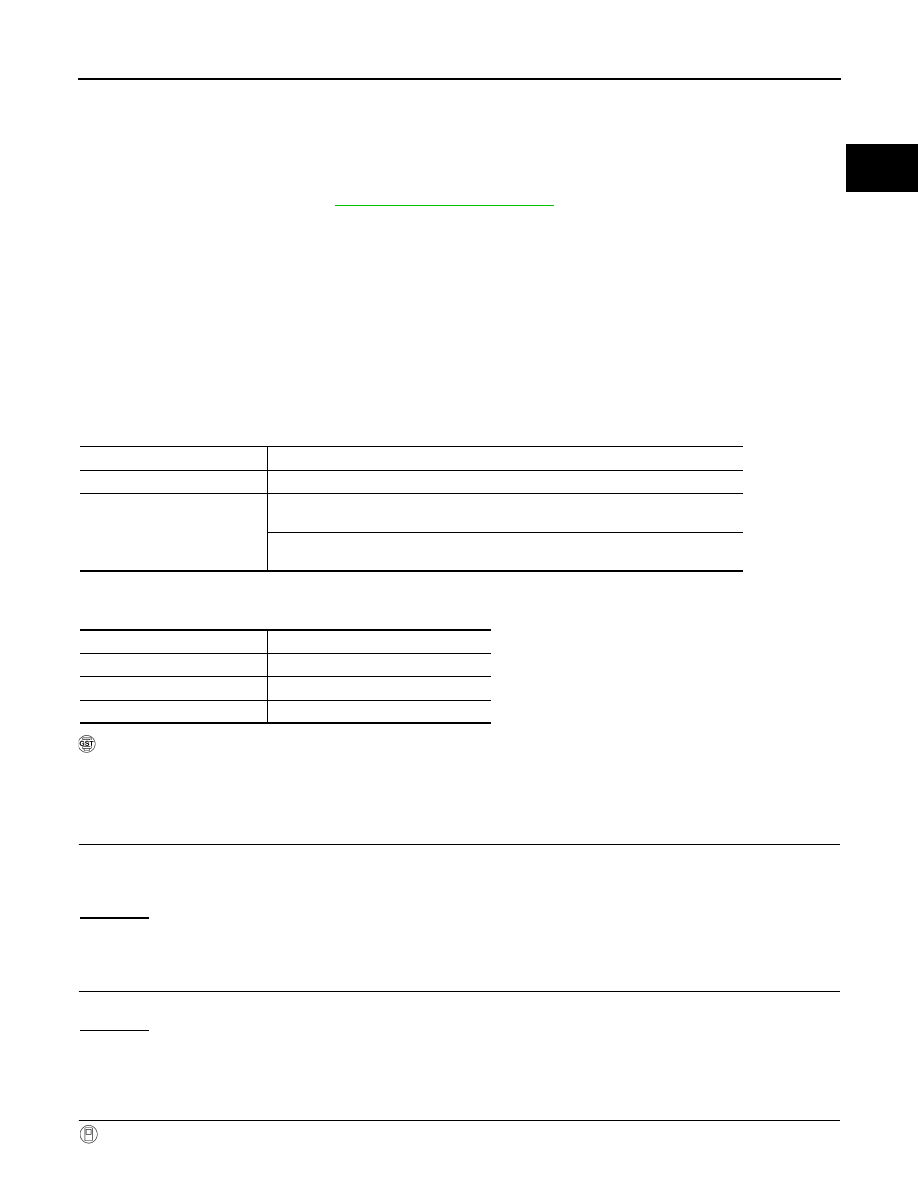Nissan Frontier. Manual - part 540

P0300, P0301, P0302, P0303, P0304, P0305, P0306 MISFIRE
EC-731
< DTC/CIRCUIT DIAGNOSIS >
[VQ40DE FOR USA AND CANADA]
C
D
E
F
G
H
I
J
K
L
M
A
EC
N
P
O
3. Turn ignition switch OFF and wait at least 10 seconds.
4. Turn ignition switch ON.
5. Turn ignition switch OFF and wait at least 10 seconds.
6. Restart engine and let it idle for about 15 minutes.
7. Check 1st trip DTC.
8. If 1st trip DTC is detected, go to
NOTE:
If 1st trip DTC is not detected during above procedure, performing the following procedure is advised.
a. Turn ignition switch OFF and wait at least 10 seconds.
b. Turn ignition switch ON.
c. Turn ignition switch OFF and wait at least 10 seconds.
d. Start engine and drive the vehicle under similar conditions to (1st trip) Freeze Frame Data for a certain
time. Refer to the table below.
Hold the accelerator pedal as steady as possible.
Similar conditions to (1st trip) Freeze Frame Data mean that the following conditions should be satisfied at
the same time.
Driving time varies according to the engine speed in the freeze frame data.
WITH GST
Follow the procedure “WITH CONSULT” above.
Diagnosis Procedure
INFOID:0000000009481388
1.
CHECK FOR INTAKE AIR LEAK AND PCV HOSE
1. Start engine and run it at idle speed.
2. Listen for the sound of the intake air leak.
3. Check PCV hose connection.
OK or NG
OK
>> GO TO 2.
NG
>> Discover air leak location and repair.
2.
CHECK FOR EXHAUST SYSTEM CLOGGING
Stop engine and visually check exhaust tube, three way catalyst and muffler for dents.
OK or NG
OK (With CONSULT)>>GO TO 3.
OK (Without CONSULT)>>GO TO 4.
NG
>> Repair or replace it.
3.
PERFORM POWER BALANCE TEST
With CONSULT
Engine speed
Engine speed in the freeze frame data
± 400 rpm
Basic fuel schedule
Basic fuel schedule in freeze frame data
× (1± 0.1)
Engine coolant temperature (T)
condition
When the freeze frame data shows lower than 70
°C (158 °F),
T should be lower than 70
°C (158 °F).
When the freeze frame data shows higher than or equal to 70
°C (158 °F),
T should be higher than or equal to 70
°C (158 °F).
Engine speed
Time
Around 1,000 rpm
Approximately 10 minutes
Around 2,000 rpm
Approximately 5 minutes
More than 3,000 rpm
Approximately 3.5 minutes